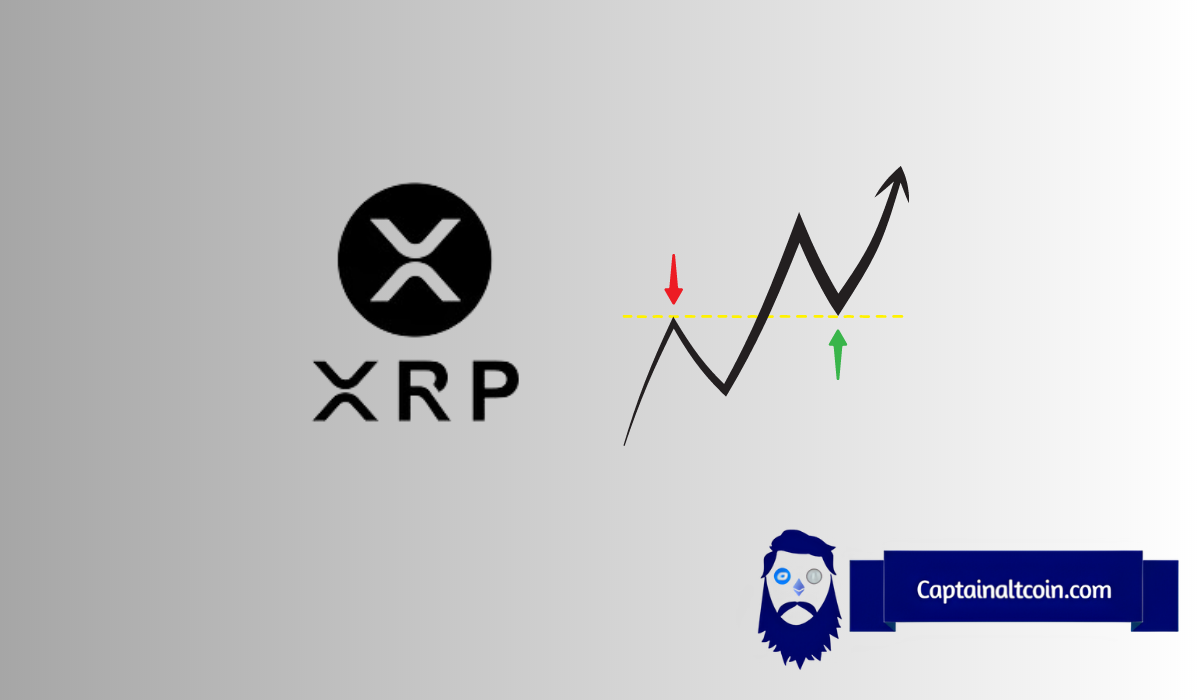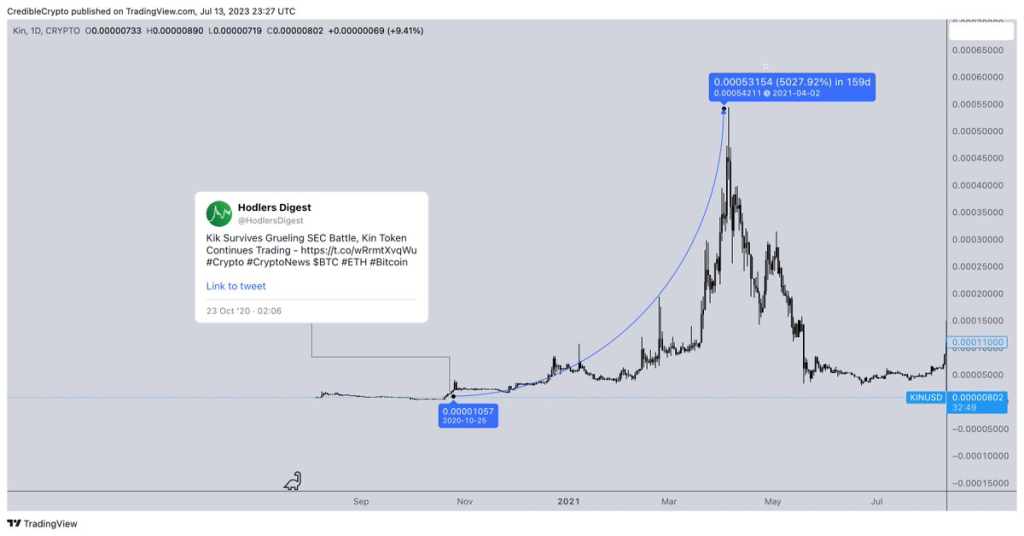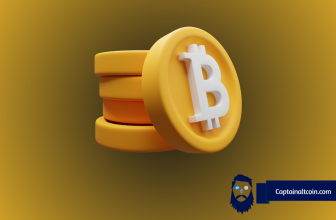
Cryptocurrency has always been a tumultuous landscape, peppered with vertiginous peaks and abyssal valleys. But few stories encapsulate this drama like that of Kik’s $KIN token.
Once a shining beacon in 2017’s crypto boom, KIN was caught in the crosshairs of the U.S. Securities and Exchange Commission (SEC) in June 2019. The financial watchdog slapped Kik with a lawsuit alleging that their $100 million fundraising campaign was an “unregistered securities offering”.
A devastating blow to any entity, let alone a token that had just been riding high, the lawsuit precipitated a downfall that would see KIN value plunge 99% to its all-time low by October 20, 2020. However, the storm was just before the calm.
Doge2014 raises 500K in days celebrating Dogecoin. Make potentially big profits and get in on exclusive airdrop!
Show more +Merely three days post the dismal low, the lawsuit concluded and sparked a KIN mega-rally that catapulted it 50X within the ensuing six months. It’s a real-life Phoenix saga in the volatile world of cryptocurrencies, demonstrating that even in the direst circumstances, resurgence is possible.

As history has a knack for repeating itself, some crypto enthusiasts are witnessing a similar pattern in Ripple’s $XRP token. While it’s premature to predict a similar 50X surge, early signs indicate the commencement of a potentially massive mega-rally.
KIN vs. XRP: A Tale of Two Lawsuits
Like KIN, XRP has been embroiled in a legal brawl with the SEC. The saga began when the SEC accused Kik Interactive, the developer of KIN, of selling unregistered securities in the form of KIN tokens.
In October 2020, Judge Alvin Hellerstein granted a summary judgment favoring the SEC, thereby classifying KIN tokens as securities. However, following this ruling, Kik Interactive agreed to a $5 million settlement with the SEC, marking the end of this legal battle.
What followed was an interesting twist of fate. The Kin Foundation, confident in its survival and the continuity of its token, announced that since the SEC no longer considered KIN as a security and no violation of securities laws was found, KIN “should be free to trade on exchanges”.
The implications of these developments reverberated across the entire crypto market. Despite the SEC’s seemingly unclear or even hostile position on significant crypto assets, barring Bitcoin and Ether, KIN managed to turn the tide in its favor.
The Foundation now has plans to continue bolstering the KIN ecosystem and “active development” of the open-source KIN SDK and the new Code wallet, signaling an optimistic future for the token.
As KIN redefines its narrative, the crypto community can’t help but draw parallels with the ongoing XRP-SEC face-off. It’s a wait-and-watch scenario, but if KIN’s rise from the ashes is any indication, the $XRP rally might just be getting started. Strap in, for the ride is about to begin.









There is no Kin Foundation anymore